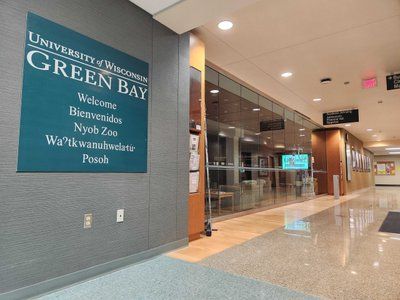By Tom Still
MADISON – The nation’s space agency announced this month it wants to return to the moon – and stay there long enough to pack for the longer trip to Mars. Others say NASA should bypass the Earth’s lifeless satellite and head directly for the red planet, where there are tantalizing signs of water. Still others say the government should get out of the business of space flight and let private entrepreneurs figure it out.
No matter where the space program goes from here, Wisconsin science and technology know-how should be strapped in for the ride.
With the help of space programs around the world, NASA has called for establishing a base camp on one of the moon’s more sunlit poles. It would be built in steps starting in 2020, when four-person crews would begin making week-long visits. The base would be permanently staffed by 2024.
Returning to the moon may strike some Americans as a “been-there, done-that” exercise and a potential waste of taxpayer dollars. After all, space explorers haven’t left footprints on the moon since Apollo 17 in 1972 – and there’s no guarantee Congress or future presidents will buy into a return trip.
However, others recognize that space exploration is essential to mankind’s future on Earth, and that a permanent lunar camp is a jumping-off point to Mars and beyond. Wisconsin scientists, public and private, have the expertise to help get us there and to prepare for what comes next. At the UW-Madison, for example, researchers have:
? Developed remote sensing technologies to study the atmosphere of the earth and other planets.
? Worked with NASA, academia and industry to develop and commercialize technologies, products and processes that can be used in space. One example is robotic-assisted material-joining technology.
? Researched the use of plants for life support on long-term space bases, such as the proposed lunar base camp. For example, a payload of red potatoes sprouted on a 1995 shuttle mission with the help of UW researchers. The Wisconsin Center for Space Automation and Robotics has been a part of space station experiments to grow soybeans to learn if they have improved oil, protein and carbohydrates.
? Mapped portions of the Milky Way and catalogued millions of stars, many of which had never been seen before.
? Designed a third-generation free-flying robot to help astronauts in a pressurized, weightless environment.
The UW-Madison has also been a leader in researching the mining of helium 3, a potential fusion energy source, on the moon’s surface. Harrison (Jack) Schmitt, the last astronaut to walk on the moon, has been an adjunct professor in Madison and a tireless advocate for development of helium 3 fusion power.
Some researchers see helium 3 as the perfect fuel source. It is incredibly potent, non-polluting and has practically no radioactive by-products. The trouble is precious little exists on Earth. On the moon, however, it’s as a common as … well, moon dust.
There is an estimated 100 million tons of helium 3 scattered in dusty particles on the surface of the moon, enough to power the Earth for thousands of years. A single shuttle load (about 25 tons) could fuel the United States for a year.
“Helium 3 fusion energy may be the key to future space exploration and settlement. It could be the ‘cash crop’ of the moon – and the new energy source of the 21st century,” said Gerald Kulcinski, director of the UW-Madison’s Fusion Technology Institute and a member of the NASA Advisory Council.
Private companies such as Orbital Technologies Corp. have been leaders in providing NASA and related agencies with functional products and cutting-edge R&D. Known as ORBITEC, the company has won 180 federal contracts worth $125 million over time. And when it comes time to develop that lunar “pick-up truck,” as one NASA official described it, Wisconsin has no shortage of companies with expertise in robotics, control systems and extreme materials. And is improbable as it might seem, Sheboygan is the location of the Midwest’s only restricted airspace and “portal to space” as designated by the Federal Aviation Administration.
From Mercury to Gemini, from Apollo to the shuttle program, manned space exploration has been a national priority. There have been disasters, such as the losses of shuttle Challenger in 1986 and shuttle Columbia in 2003, but there have been ample triumphs. Returning to the moon and establishing a permanent camp there could build upon those successes.
Still is president of the Wisconsin Technology Council. He is the former associate editor of the Wisconsin State Journal in Madison.
###





